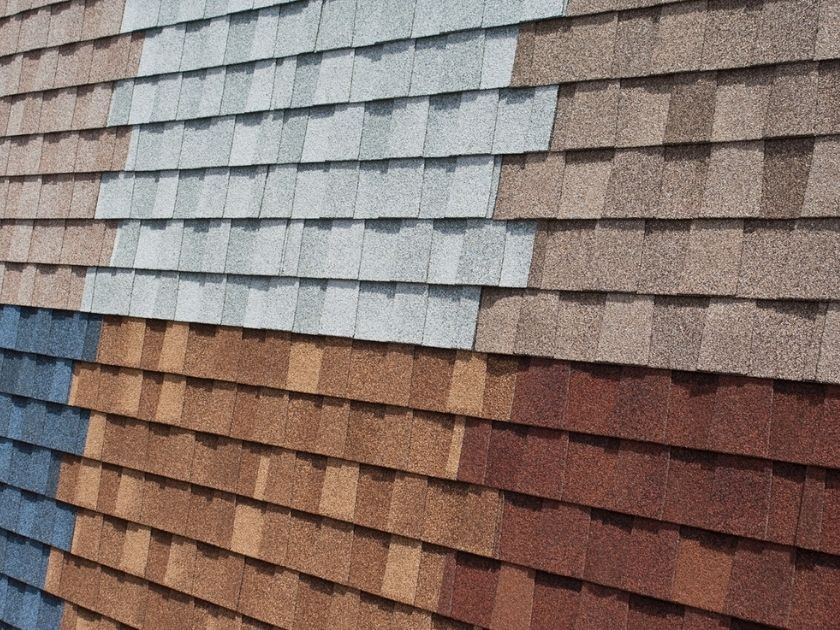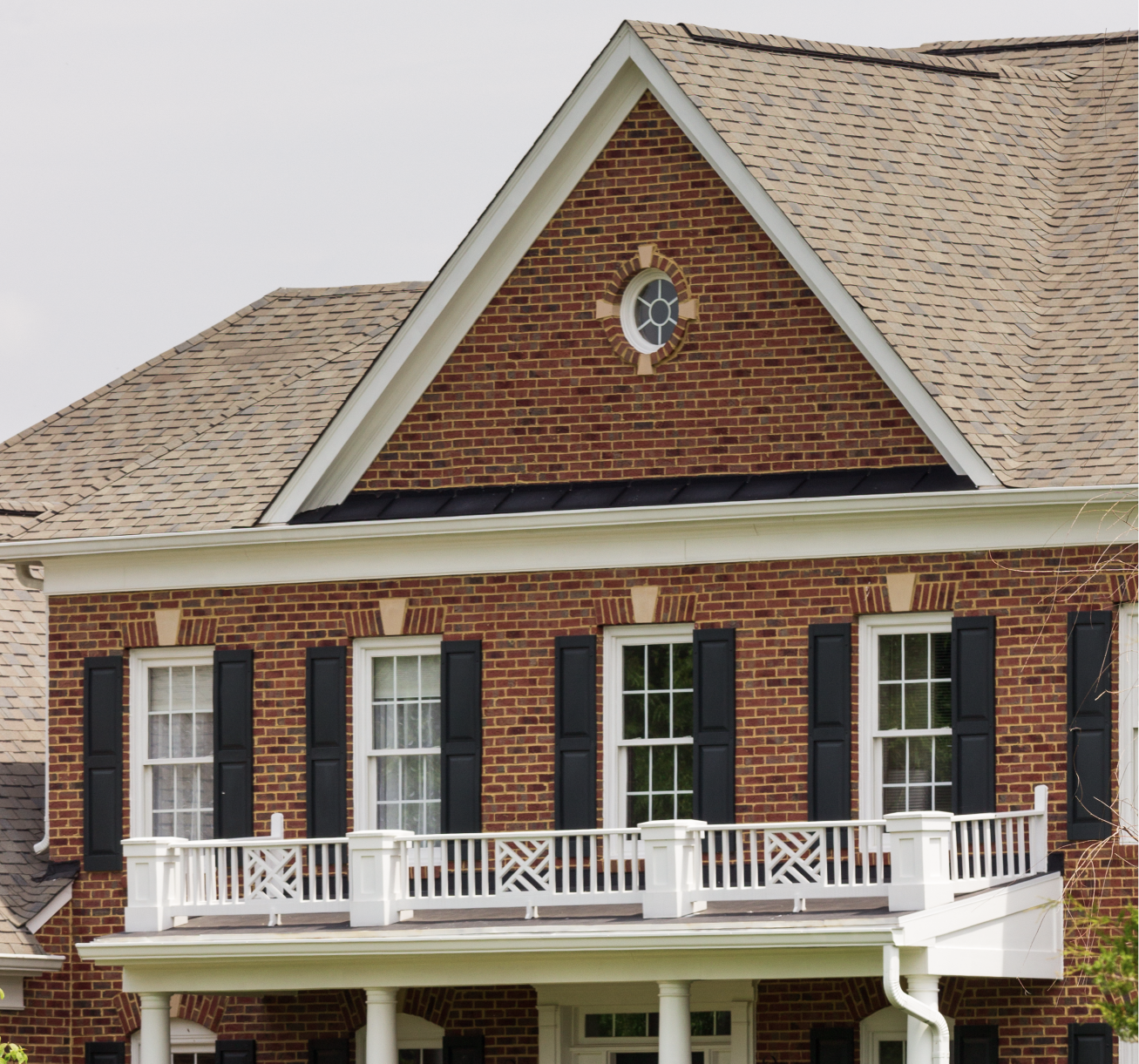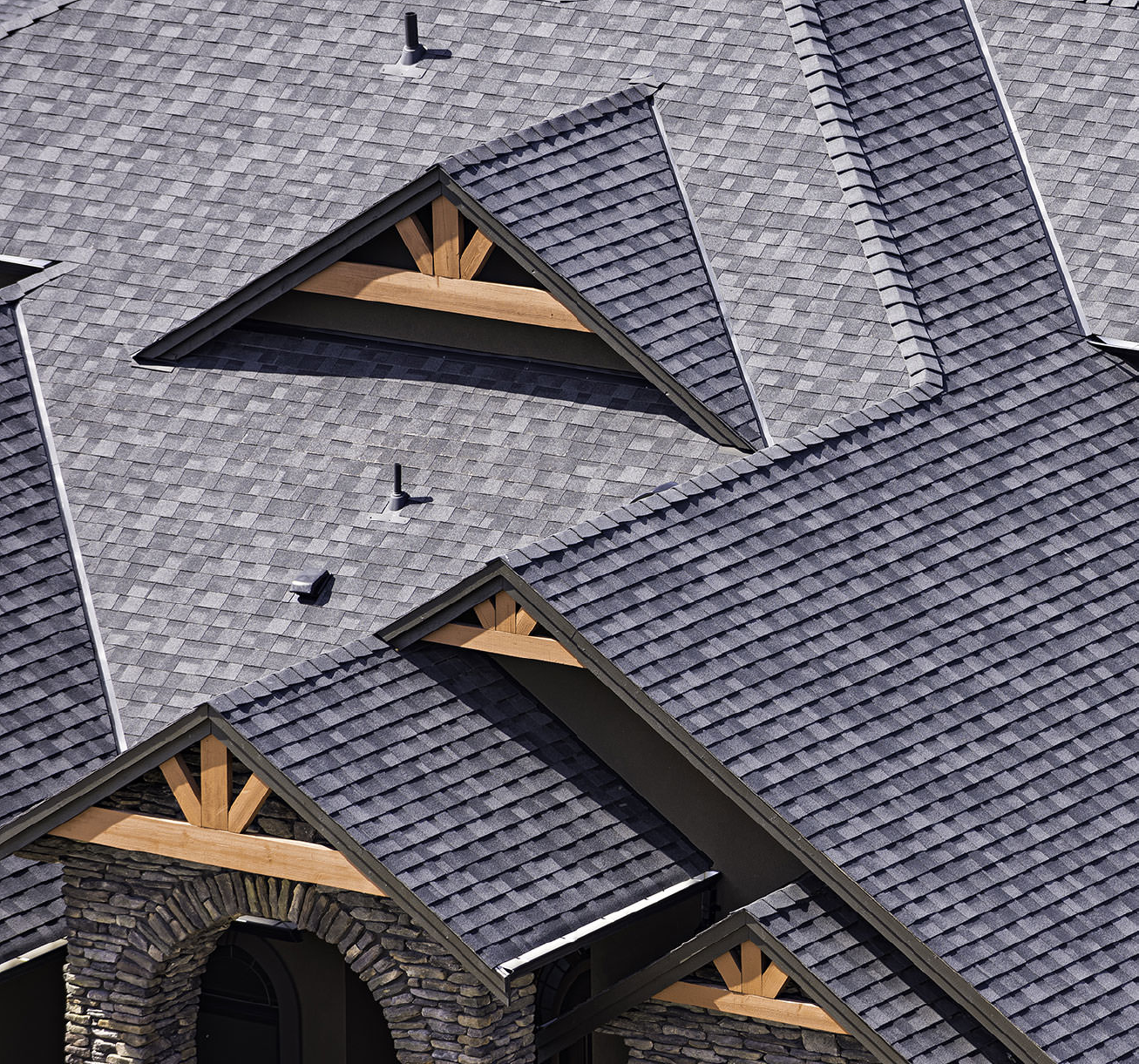Types of Asphalt Roofing Shingles

Asphalt Roofing Shingles
What are Composition Shingles?
To begin with, let’s delve into composition shingles. The term “composition” broadly refers to shingles composed of multiple materials. It’s important to note that slate shingles do not fall under the category of composition shingles, as they are crafted from a singular material, namely slate.
From a technical standpoint, all contemporary asphalt shingles can be classified as composition shingles. In modern shingle production, fiberglass serves as the core material, coated with layers of asphalt and granules. In the past, manufacturers created another variant of composition shingles utilizing asphalt and cellulose, a plant-based substance. However, it’s worth mentioning that these particular shingles are no longer in production. For the purposes of this explanation, it’s essential to understand that the various shingle types mentioned below are, in fact, fiberglass shingles.

Alternatively referred to as 3-tab shingles or strip shingles, represent the oldest form of asphalt shingles that persists in the market today. Despite their enduring presence, they have undergone numerous enhancements, with one notable improvement being the substitution of a cellulose core with a fiberglass mat.
In their initial iterations, traditional shingles were considerably smaller and required manual sealing. The 1950s marked a pivotal moment when self-sealing shingles were introduced. This innovation allowed for straightforward installation by nailing them to the roof, subsequently relying on the sun’s heat to trigger the sealing process, contingent upon precise installation by roofing professionals.
Originally characterized by a monotonous appearance, wherein each style consisted of a single brown or black shade, contemporary technology has ushered in a transformative shift. Presently, 3-tab shingles are available in multi-shade combinations, a feature that not only enhances aesthetic appeal but also conceals variations that might be noticeable in a solid color.
Identifying 3-tab shingles is facilitated by their straightforward and uniform look. Each shingle adheres to the same shape, presenting as perfectly rectangular.
Architectural shingles, also known as laminate shingles or dimensional shingles, distinguish themselves from traditional shingles primarily through their construction. Dimensional shingles consist of two layers, both crafted from a blend of asphalt and fiberglass. This dual-layered thickness may confer an advantage in terms of weather resistance.
Originally designed to offer improved aesthetics and visual thickness, dimensional shingles gained popularity due to their simplified installation process. Presently, they stand as the most widely favored type of shingle.
Identifying dimensional shingles is facilitated by their distinctive appearance. Unlike 3-tab shingles, these shingles deviate from uniform shapes. Instead, each shingle is manufactured with alternating areas or tabs featuring single and double layers, creating a pattern often likened to “dragon’s teeth.” Manufacturers also incorporate a shadow line, characterized by a band of darker granules. The intermittent presence of double-layer tabs, coupled with the shadow band on the single-layer areas, introduces dimension to the roof, enhancing the overall aesthetic of the home.

Numerous types of roof shingles can be classified as performance shingles, designed to provide specific performance advantages such as increased wind resistance, hail resistance, or solar reflectivity. While these features may be found in other shingle varieties, asphalt shingles, in particular, offer several advantages for your home.
- Impact Resistance:
In regions prone to hailstorms, shingles can be subjected to sudden and forceful impacts. Performance asphalt shingles are engineered to better withstand hail, remaining intact through such weather events.
- Wind Resistance:
Specially designed features in performance shingles enable them to effectively handle high winds, reducing the risk of wind uplift or blow-off during severe weather conditions.
- Algae Resistance:
The issue of algae growth on rooftops is a common concern in many parts of North America. Modern asphalt shingles often incorporate algae-resistant granules, minimizing the likelihood of blue-green algae staining on the roof after it dies off.
- Fire Resistance:
Protecting homes from fire is a crucial consideration. Shingles with Class A Fire Resistance, the highest fire resistance rating, are available. It’s important to note that achieving this high fire rating requires the installation of the entire roof system, as various components work together to enhance the overall fire protection of your home.

What is the Difference Between Architectural Shingles and Asphalt Shingles?
While both architectural shingles and 3-tab shingles fall under the category of “asphalt” shingles, the common question usually centers around the distinctions between the two. Homeowners often find themselves perplexed about the genuine differences between 3-tab and architectural shingles.
In essence, the straightforward answer lies in the thickness of architectural shingles.
This added thickness not only provides potential performance advantages but also imparts a distinctive and striking appearance. Architectural shingles are characterized by shadow bands and a pattern reminiscent of “dragon’s teeth,” creating a visual drama that sets them apart from the more uniform and flatter 3-tab shingles. It’s crucial to note that the preference between the two types of shingles depends on individual priorities, home characteristics, and prevailing climate conditions.
WHY CHOOSE GOLDEN SUMMIT ROOFING AND RESTORATION

Are you planning to use your insurance for your roof?
YOU CAN RELY ON US.



